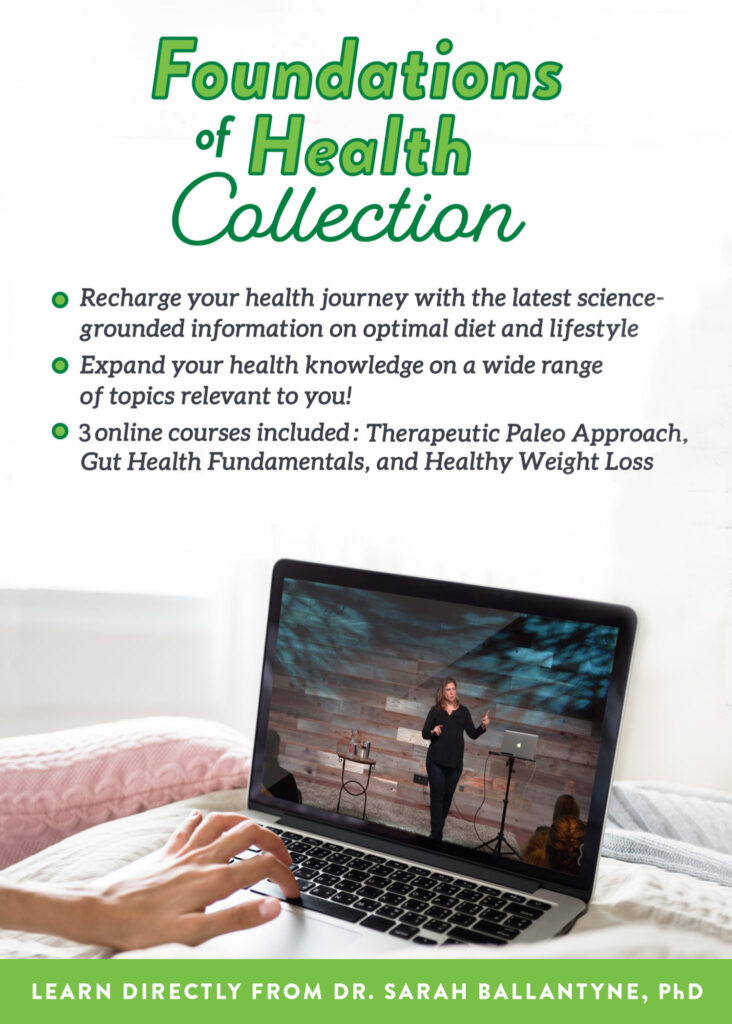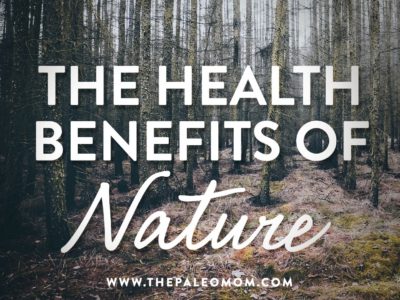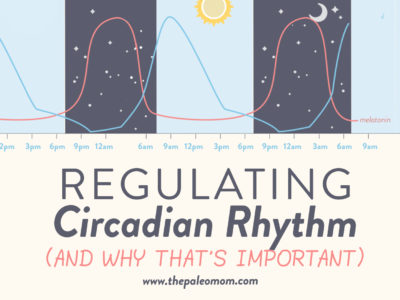The feelings of peace, relaxation, and tranquility that come from spending time in nature are so potent that they’ve been measured and confirmed by science. Everything from a short visit to a park to a long camping trip in the wilderness can benefit our physical and psychological health.
Table of Contents[Hide][Show]
 For example, spending several hours in a forest gives an impressive boost to the immune system, including increasing natural killer cell activity by 50 percent, which improves the immune system’s capacity to detect and eliminate cancerous cells and cells infected with viruses and parasites. When that forest trip is increased to 3 days, research has shown that natural killer cell activity, the number of natural killer cells, and intracellular anti-cancer protein levels remain elevated for at least 7 days after the trip is over! That means an extended weekend of camping could continue benefitting us long after we’re back at work.
For example, spending several hours in a forest gives an impressive boost to the immune system, including increasing natural killer cell activity by 50 percent, which improves the immune system’s capacity to detect and eliminate cancerous cells and cells infected with viruses and parasites. When that forest trip is increased to 3 days, research has shown that natural killer cell activity, the number of natural killer cells, and intracellular anti-cancer protein levels remain elevated for at least 7 days after the trip is over! That means an extended weekend of camping could continue benefitting us long after we’re back at work.
What about those of us who only have time to sit amidst a tree grove on our lunch breaks? It turns out that nature has such a powerful effect on our health that spending as little as 30 minutes per week in a green space can reduce the rates of high blood pressure and depression by 7 percent and 9 percent, respectively. The more time spent in nature per week, the lower the risk—but even short visits to some greenery are worth it.
When we swap the green of the forest for the blue of the ocean, the benefits hold firm, especially for mental well-being. One study found that when people with psychological distress were exposed to either a natural park or an ocean beach for a period of 3½ hours, they experienced significant drops in their Total Mood Disturbance scores (TMD), suggesting a major improvement in psychological health. When exposed to an urban environment, the participants’ feelings of distress did not diminish.
Save 80% Off the Foundations of Health
Expand your health knowledge on a wide range of topics relevant to you, from how to evaluate scientific studies, to therapeutic diet and lifestyle, to leaky gut and gut microbiome health, to sustainable weight loss, and much more!!!

Overall, a connection to nature—in its various forms—appears to boost memory and concentration, improve longevity, relieve stress, lower inflammation, enhance creativity, improve focus, support immune function, reduce risk of chronic disease (including cancer and cardiovascular disease), improve symptoms of mental illness, and help us sleep better. It sounds too good to be true, but this time, it’s real!
Nature Walks
 For some of us, walking in nature is just another form of exercise—and maybe it’s a little more interesting than walking in place on a treadmill. So it might come as a surprise that walking in nature is much more beneficial than walking indoors or in a city, and the benefits extend far beyond fitness.
For some of us, walking in nature is just another form of exercise—and maybe it’s a little more interesting than walking in place on a treadmill. So it might come as a surprise that walking in nature is much more beneficial than walking indoors or in a city, and the benefits extend far beyond fitness.
Compared to a similar stroll in an urban setting, a 50-minute walk in nature has been shown to decrease anxiety, reduce rumination (repeated negative thoughts about ourselves or our experiences), lower negative affect (poor self-concept and emotions), improve positive affect (positive moods like joy and alertness), improve symptoms of major depressive disorder, and even offer cognitive benefits, such as boosting working memory performance. In other studies, a 90-minute walk in nature has been shown to reduce neural activity in brain areas linked with mental illness. (A 90-minute walk in an urban setting offered no such benefits.) Nature walks of 80 minutes also appear to lower blood pressure and adrenaline, increase mood test scores for vigor, and decrease mood test scores for depression, fatigue, confusion, and anxiety.
Strapped for time? Even short nature walks can boost our well-being. In one study, a 15-minute stroll through an urban park resulted in significantly lower heart rate, lower sympathetic nerve activity (the fight-or-flight response), and higher parasympathetic nerve activity (the “rest and digest” system) than a similar walk through the city. Likewise, participants reported feeling “comfortable,” “relaxed,” “natural,” and “vigorous” after their nature walks and exhibited significantly lower levels of anxiety and negative emotions. These benefits occurred no matter what the season, even during the cold winter months.
Nature-Based Therapies
 Nature-based therapies are emerging as promising ways to manage stress and boost both physical and psychological health. In Sweden, for example, nature-based rehabilitation programs are being used to help people with stress-related mental disorders recover from burnout, depression, and anxiety. And in Japan, “forest therapy” has been used for decades to combat the negative effects of urban life. This involves spending extended time—anywhere from several hours to several days—in a forest setting and engaging in specific timed activities such as walking, lying on the ground, and deep breathing.
Nature-based therapies are emerging as promising ways to manage stress and boost both physical and psychological health. In Sweden, for example, nature-based rehabilitation programs are being used to help people with stress-related mental disorders recover from burnout, depression, and anxiety. And in Japan, “forest therapy” has been used for decades to combat the negative effects of urban life. This involves spending extended time—anywhere from several hours to several days—in a forest setting and engaging in specific timed activities such as walking, lying on the ground, and deep breathing.
A huge body of literature shows that for men and women across a wide range of ages, whether they are healthy or at risk of or experiencing chronic disease, forest therapy has wide-ranging impacts on health. Forest therapy reduces cortisol levels, lowers heart rate, increases positive feelings (both physical and emotional), lessens negative feelings, improves cognitive function, and measurably reduces oxidative stress and inflammation (as reflected by a decrease in the markers malondialdehyde, interleukin-6, and tumor necrosis factor). One study of 420 people found that after engaging in forest therapy, cortisol levels dropped by an average of 12.4 percent, sympathetic nervous activity dropped by 7 percent, systolic blood pressure decreased by 1.4 percent, heart rate dropped by 5.8 percent, and parasympathetic nervous activity (indicating a relaxed state) increased by a whopping 55 percent.
For people with borderline hypertension, forest therapy helped restore blood pressure to the optimal range, potentially preventing the condition from progressing to clinical hypertension. And for elderly patients with confirmed high blood pressure, a 7-day forest therapy trip resulted in lower inflammation and the inhibition of the renin-angiotensin system (a hormone system involved in blood pressure regulation), thus reducing the risk of cardiovascular disease. Individuals with chronic widespread pain saw significant relief from their pain, as well as associated physical and psychological symptoms, following a 2-day forest therapy camp. And on top of all that, the physiological effects of forest therapy have included improved immune function and even a protective effect against cancer!
 Other forms of nature-based therapy have had a positive effect on human health. Horticultural therapy, in which gardening is used to improve mental and/or physical well-being, shows potential as a mental health intervention as well as for the management and prevention of chronic diseases. Within the scientific literature, gardening consistently leads to benefits such as better life satisfaction, stronger sense of community, improved cognitive function, more vigor, reduced stress and anxiety, less fatigue, less anger, reduced depression symptoms, lower BMI, and greater overall happiness—just to name a few! A systematic review of horticultural therapy trials found that gardening may be an effective treatment for a variety of mental and behavioral disorders, including dementia, depression, and schizophrenia, and can have a positive effect on terminal cancer care.
Other forms of nature-based therapy have had a positive effect on human health. Horticultural therapy, in which gardening is used to improve mental and/or physical well-being, shows potential as a mental health intervention as well as for the management and prevention of chronic diseases. Within the scientific literature, gardening consistently leads to benefits such as better life satisfaction, stronger sense of community, improved cognitive function, more vigor, reduced stress and anxiety, less fatigue, less anger, reduced depression symptoms, lower BMI, and greater overall happiness—just to name a few! A systematic review of horticultural therapy trials found that gardening may be an effective treatment for a variety of mental and behavioral disorders, including dementia, depression, and schizophrenia, and can have a positive effect on terminal cancer care.
Wilderness therapy (sometimes called adventure therapy or outdoor behavioral health care) is another form of nature-based therapy with impressive—and sometimes life-changing—benefits. Wilderness therapy involves excursions into the outdoors, typically with activity-based challenges and group or individual therapy, as a way to address mental, relational, and behavioral problems. This form of therapy has been used to help at-risk youth, victims of rape or abuse, and survivors of other forms of trauma, with documented success.
Bringing Nature into Our Lives
 So how can we obtain these many benefits of nature for ourselves? One way to get the most out of our connection to nature is to take a minute to acknowledge sensations. We can stop and think about the feeling of the air on our skin, the scents we smell, the colors and organic shapes we see, the sounds we hear, and the textures around us. We can take a minute to put our hands in the dirt or feel the soft moss or let sand run through our fingers. We can take off our shoes and feel the ground beneath our feet, making note of whether it feels hard or soft, cool or warm, damp or dry. This is called “being present.” It is a form of meditation. Clearly, everyone’s access to nature is different, but it is worth taking advantage of opportunities to connect with nature when we can.
So how can we obtain these many benefits of nature for ourselves? One way to get the most out of our connection to nature is to take a minute to acknowledge sensations. We can stop and think about the feeling of the air on our skin, the scents we smell, the colors and organic shapes we see, the sounds we hear, and the textures around us. We can take a minute to put our hands in the dirt or feel the soft moss or let sand run through our fingers. We can take off our shoes and feel the ground beneath our feet, making note of whether it feels hard or soft, cool or warm, damp or dry. This is called “being present.” It is a form of meditation. Clearly, everyone’s access to nature is different, but it is worth taking advantage of opportunities to connect with nature when we can.
Citations
Berman MG, et al. “Interacting with nature improves cognition and affect for individuals with depression.” J Affect Disord. 2012 Nov;140(3):300-5. doi: 10.1016/j.jad.2012.03.012. Epub 2012 Mar 31.
Berman MG, et al. “The cognitive benefits of interacting with nature.” Psychol Sci. 2008 Dec;19(12):1207-12. doi: 10.1111/j.1467-9280.2008.02225.x.
Bowen DJ, et al. “Wilderness adventure therapy effects on the mental health of youth participants.” Eval Program Plann. 2016 Oct;58:49-59. doi: 10.1016/j.evalprogplan.2016.05.005. Epub 2016 May 13.
Han JW, et al. “The Effects of Forest Therapy on Coping with Chronic Widespread Pain: Physiological and Psychological Differences between Participants in a Forest Therapy Program and a Control Group.” Int J Environ Res Public Health. 2016 Feb 24;13(3). pii: E255. doi: 10.3390/ijerph13030255.
Kamioka H, et al. “Effectiveness of horticultural therapy: a systematic review of randomized controlled trials.” Complement Ther Med. 2014 Oct;22(5):930-43. doi: 10.1016/j.ctim.2014.08.009. Epub 2014 Sep 1.
Li Q & Kawada T. “Possibility of clinical applications of forest medicine.” Nihon Eiseigaku Zasshi. 2014;69(2):117-21.
Li Q, et al. “Forest bathing enhances human natural killer activity and expression of anti-cancer proteins.” Int J Immunopathol Pharmacol. 2007 Apr-Jun;20(2 Suppl 2):3-8.
Li Q, et al. “Visiting a forest, but not a city, increases human natural killer activity and expression of anti-cancer proteins.” Int J Immunopathol Pharmacol. 2008 Jan-Mar;21(1):117-27.
Li Q, et al. “A forest bathing trip increases human natural killer activity and expression of anti-cancer proteins in female subjects.” J Biol Regul Homeost Agents. 2008 Jan-Mar;22(1):45-55.
Li Q, et al. “Effects of Forest Bathing on Cardiovascular and Metabolic Parameters in Middle-Aged Males.” Evid Based Complement Alternat Med. 2016;2016:2587381. doi: 10.1155/2016/2587381. Epub 2016 Jul 14.
Mao GX, et al. “Effects of short-term forest bathing on human health in a broad-leaved evergreen forest in Zhejiang Province, China.” Biomed Environ Sci. 2012 Jun;25(3):317-24. doi: 10.3967/0895-3988.2012.03.010.
Mao GX, et al. “Therapeutic effect of forest bathing on human hypertension in the elderly.” J Cardiol. 2012 Dec;60(6):495-502. doi: 10.1016/j.jjcc.2012.08.003. Epub 2012 Sep 1.
Miyazaki Y, et al. “Forest medicine research in Japan.” Nihon Eiseigaku Zasshi. 2014;69(2):122-35.
Ochiai H, et al. “Physiological and Psychological Effects of a Forest Therapy Program on Middle-Aged Females.” Int J Environ Res Public Health. 2015 Dec; 12(12): 15222–15232.
Ochiai H, et al. “Physiological and psychological effects of forest therapy on middle-aged males with high-normal blood pressure.” Int J Environ Res Public Health. 2015 Feb 25;12(3):2532-42. doi: 10.3390/ijerph120302532.
Ray H & Jakubec SL. “Nature-based experiences and health of cancer survivors.” Complement Ther Clin Pract. 2014 Nov;20(4):188-92. doi: 10.1016/j.ctcp.2014.07.005. Epub 2014 Aug 14.
Powch IG. “Wilderness therapy.” Theoretical Perspectives. 1994:15(3-4);11-27.
Soga M, et al. “Gardening is beneficial for health: A meta-analysis.” Prev Med Rep. 2017 Mar; 5: 92–99.
Shanahan DF, et al. “Health Benefits from Nature Experiences Depend on Dose.” Published online 2016 Jun 23. doi: 10.1038/srep28551
Song C, et al. “Physiological Effects of Nature Therapy: A Review of the Research in Japan.” Int J Environ Res Public Health. 2016 Aug 3;13(8). pii: E781. doi: 10.3390/ijerph13080781.
Song C, et al. “Effect of forest walking on autonomic nervous system activity in middle-aged hypertensive individuals: a pilot study.” Int J Environ Res Public Health. 2015 Mar 2;12(3):2687-99. doi: 10.3390/ijerph120302687.
Song C, et al. “Physiological and Psychological Effects of a Walk in Urban Parks in Fall.” Int J Environ Res Public Health. 2015 Nov 9;12(11):14216-28. doi: 10.3390/ijerph121114216.
Song C, et al. “Physiological and psychological effects of walking on young males in urban parks in winter.” J Physiol Anthropol. 2013 Oct 29;32:18. doi: 10.1186/1880-6805-32-18.
Song C, et al. “Physiological and psychological responses of young males during spring-time walks in urban parks.” J Physiol Anthropol. 2014 May 1;33:8. doi: 10.1186/1880-6805-33-8.
Sung J, et al. “The effect of cognitive behavior therapy-based “forest therapy” program on blood pressure, salivary cortisol level, and quality of life in elderly hypertensive patients.” Clin Exp Hypertens. 2012;34(1):1-7. doi: 10.3109/10641963.2011.618195. Epub 2011 Oct 18.
Triguero-Mas M, et al. “The effect of randomised exposure to different types of natural outdoor environments compared to exposure to an urban environment on people with indications of psychological distress in Catalonia.” PLoS One. 2017 Mar 1;12(3):e0172200. doi: 10.1371/journal.pone.0172200. eCollection 2017.









